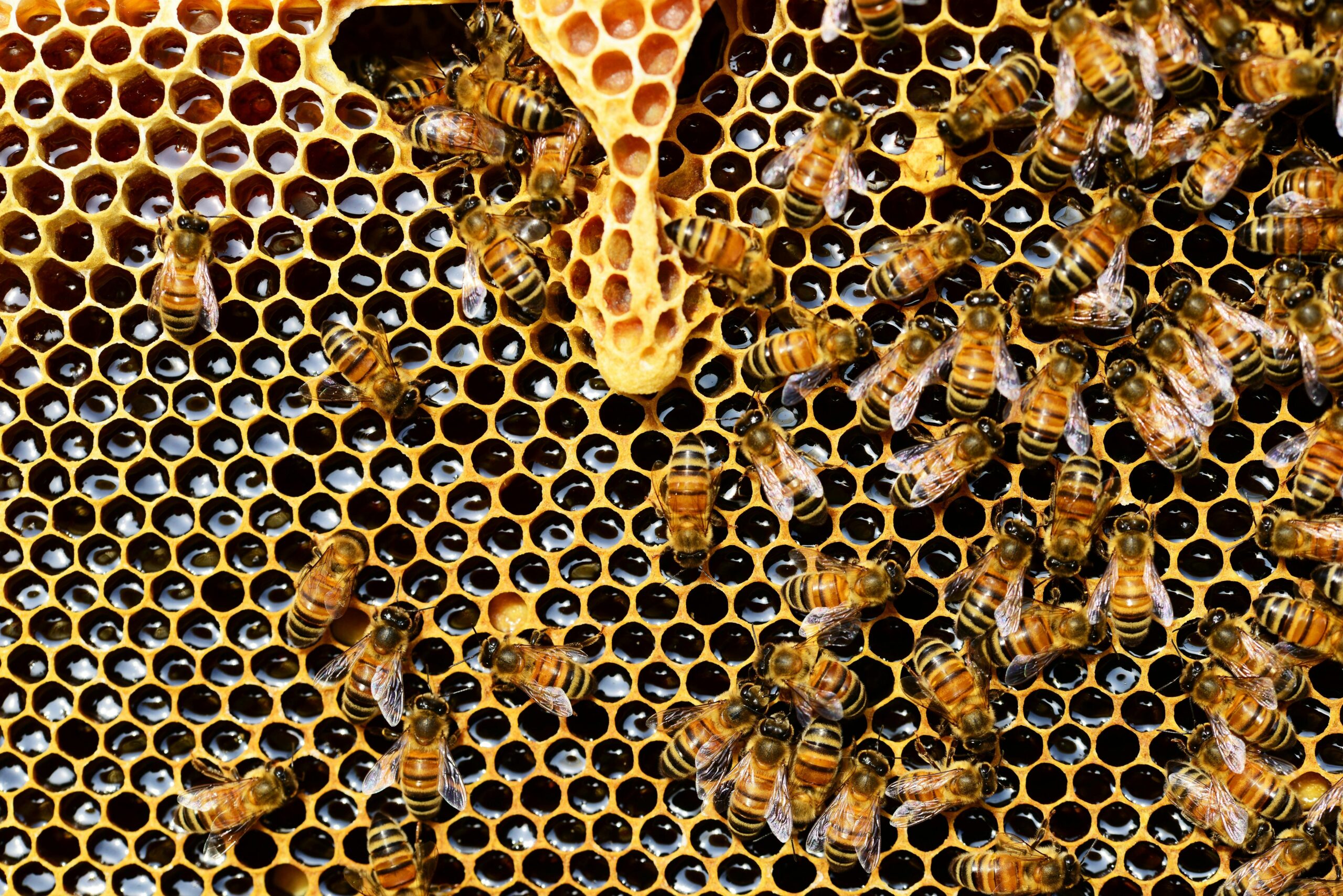All About Bees
Bees play a crucial role in our ecosystem as pollinators. However, their presence in or around your home can pose challenges, especially if they decide to nest near human activity. Understanding how to manage and control bee populations is essential for safety and maintaining balance in our environment.
What are Bees?
Bees are flying insects that are closely related to wasps and ants. They belong to the order Hymenoptera and the family Apidae. Common species include the honeybee, bumblebee, and carpenter bee.
Bees are known for their role in pollination and honey production. They are social insects that live in colonies, with a clear division of labor among workers, drones, and the queen.
How to Identify Bees
Appearance:
Body Characteristics:
- Fuzzy and covered in hair, which aids in pollination
- Two pairs of wings
- Long antennae
Size and Color:
- Varies by species
- Common colors include yellow, black, and brown
- Size ranges from small (e.g., honeybees) to large (e.g., bumblebees)
Distinguishing Features:
- Honeybees: Small, with orange and black stripes
- Bumblebees: Larger, with fuzzy bodies and black and yellow or orange stripes
- Carpenter Bees: Large, shiny black or metallic blue with a smooth abdomen
Similar Pests: Bees can be confused with wasps and hornets. Unlike wasps, bees have hairy bodies and are typically less aggressive unless provoked.
Activity and Seasonality
Active Seasons: Bees are most active during the spring and summer months when flowers are blooming.
Lifecycle: The lifecycle of a bee includes four stages: egg, larva, pupa, and adult. The entire lifecycle can take a few weeks to several months, depending on the species and environmental conditions.
Where to Find Bees in or Around Your House
Common Habitats: Bees are commonly found in gardens, under eaves, in wall voids, and in trees. They often build their nests in sheltered, undisturbed areas.
Specific Hiding Spots: Look for nests in attic spaces, roof voids, or on exterior walls. Bees also nest in ground burrows or in old wooden structures.
How to Get Rid of Bees
Immediate Action: If you spot a bee nest near your home, avoid disturbing it. Bees are protective of their nests and can become aggressive if threatened.
Professional Treatments: Contact a professional pest control service for safe removal and treatment options. They can use specialized techniques to remove nests without causing harm to the bees or surrounding environment.
DIY Methods: For minor issues, you can use natural repellents like peppermint oil or vinegar. However, removing a bee nest should ideally be handled by professionals to avoid stings and potential allergic reactions.
How to Prevent Bees
Preventive Measures:
- Seal cracks and crevices around your home
- Install screens on windows and vents
- Keep outdoor areas clean and free of food scraps
Home Maintenance:
- Regularly inspect and maintain roof and siding
- Remove any old nests or hives from previous seasons
- Trim back overgrown plants and shrubs near the home
Long-term Strategies:
- Use bee repellents around potential nesting sites
- Consider installing bee-proof barriers in high-risk areas
- Maintain a well-kept yard with minimal flowering plants near entry points
Professional Assistance:
- Contact Pest Control Consultants for expert advice and services
Conclusion
Bees are essential pollinators, but their presence around your home can be problematic. Identifying, managing, and preventing bee infestations are key to ensuring safety and maintaining ecological balance.
If you’re dealing with a bee infestation, contact Pest Control Consultants today for a free consultation and effective treatment plan. Our experts will help you safely manage and remove bee nests, ensuring peace of mind for you and your family.
